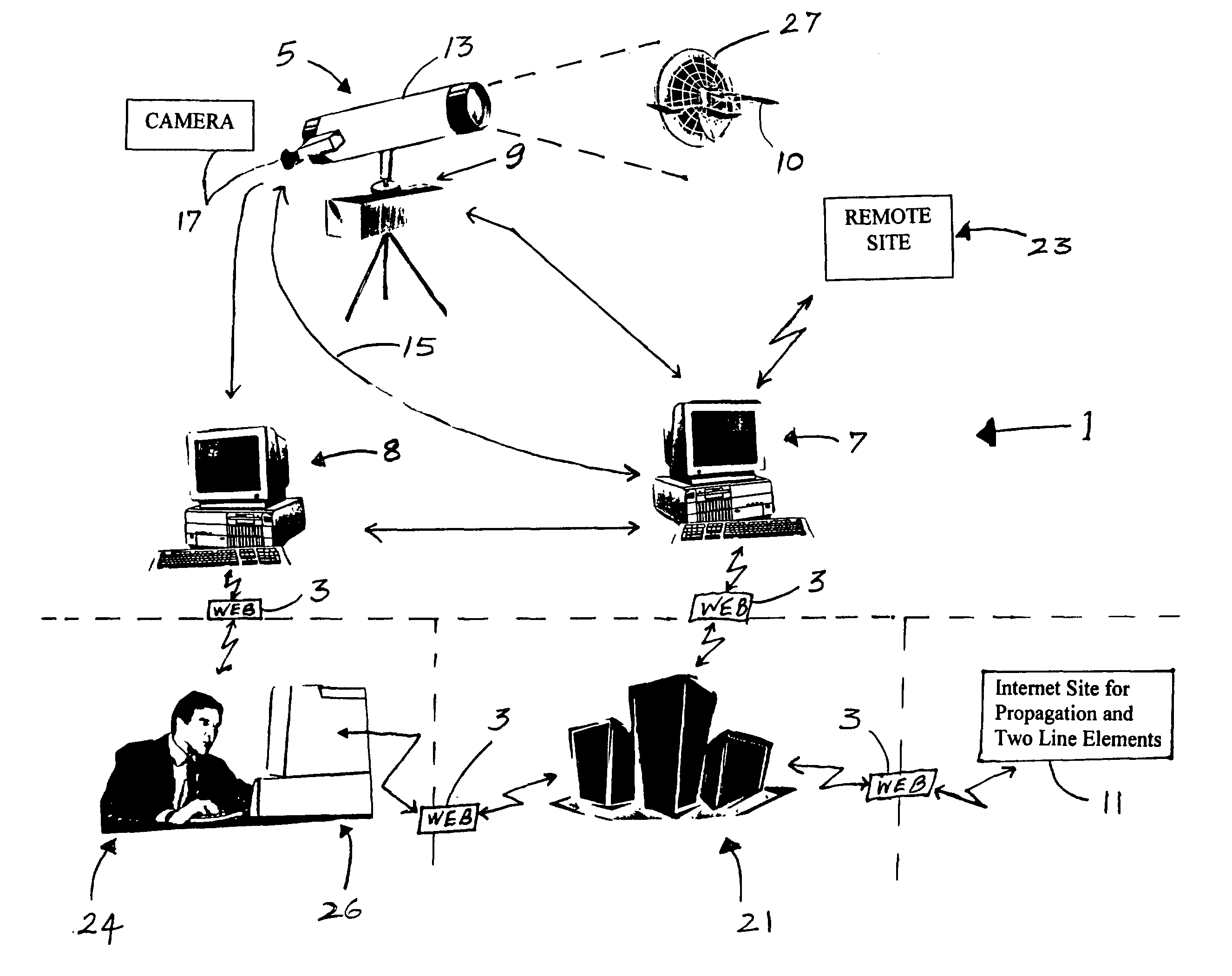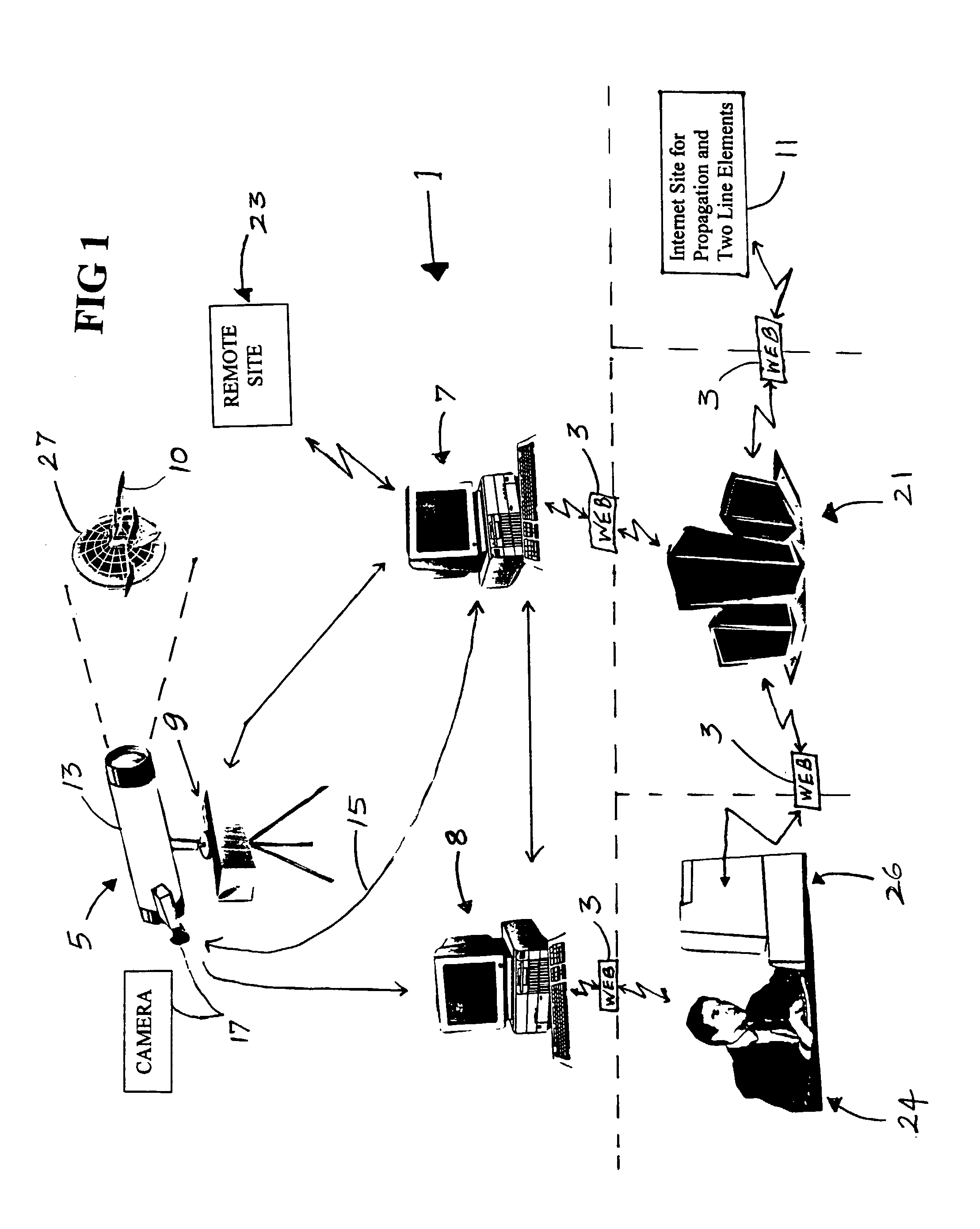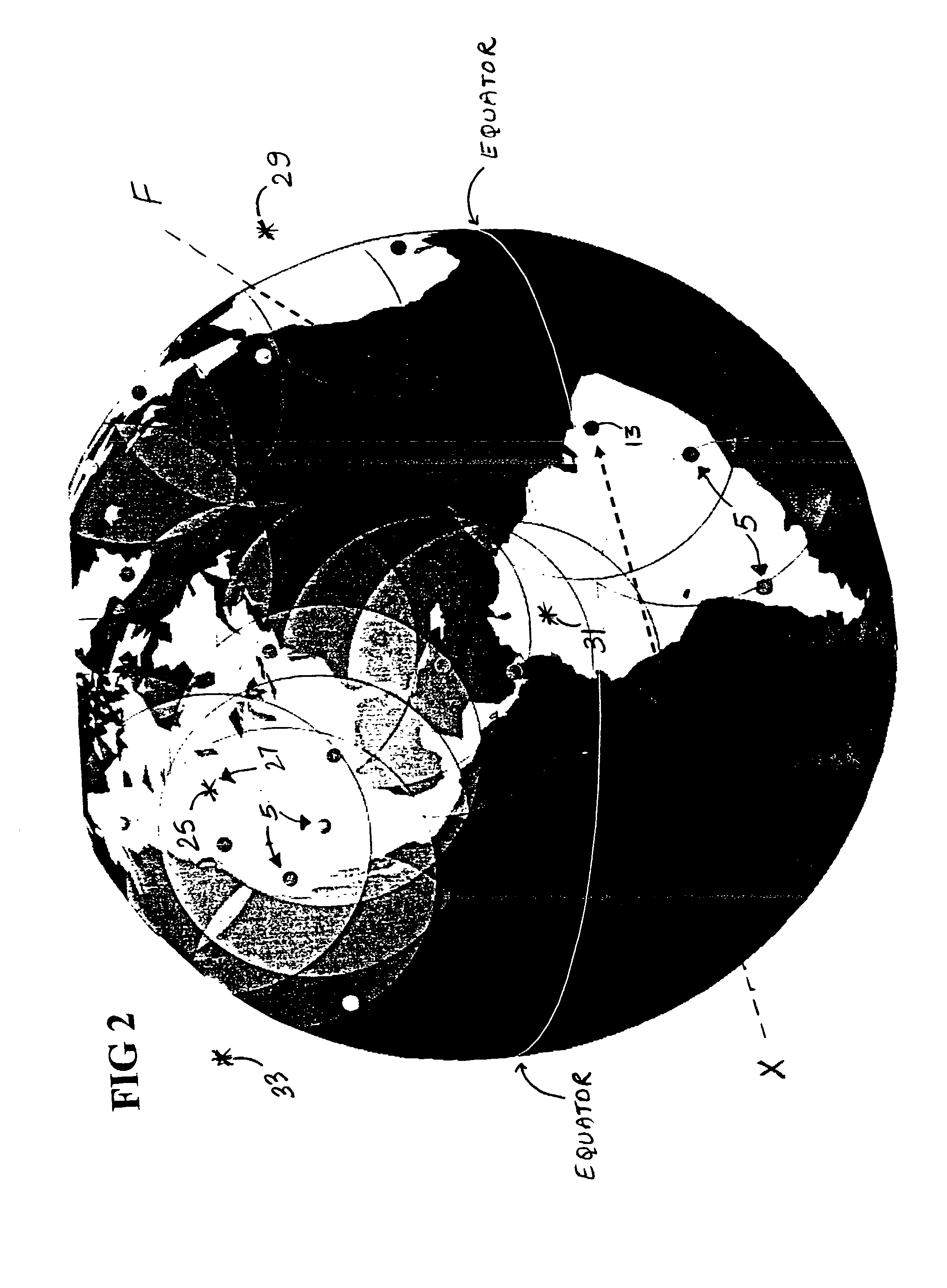Autonomous robotic telescope system
- Summary
- Abstract
- Description
- Claims
- Application Information
AI Technical Summary
Benefits of technology
Problems solved by technology
Method used
Image
Examples
Embodiment Construction
[0014]As shown in FIG. 1, a preferred autonomous robotic telescope system 1 uses interconnections on the web 3. Telescope systems 5 operate autonomously and remotely, being controlled by remote local slave-computers 7, 8, and providing information over the web 3. Automatic scheduling is achieved by programming the telescope control by the slave-computers 7 which are remotely programmable. Satellite antennas 10 and propagators and / or two-line elements 11 are provided for satellite tracking and are available on several web sites. The slave-computer controlled telescopes 13 are positioned by computer-controlled positioners 15, and cameras 17 are controlled by the remote control computers 8. A master server 21 controls the slave-computers 7, 8, the remote telescope systems 5, the satellite antennas 10, and trackers 9. The master server 21 coordinates all of the remote telescope systems 5 and accepts new information from satellite propagators 11, all in real-time. User information sites ...
PUM
 Login to View More
Login to View More Abstract
Description
Claims
Application Information
 Login to View More
Login to View More - R&D
- Intellectual Property
- Life Sciences
- Materials
- Tech Scout
- Unparalleled Data Quality
- Higher Quality Content
- 60% Fewer Hallucinations
Browse by: Latest US Patents, China's latest patents, Technical Efficacy Thesaurus, Application Domain, Technology Topic, Popular Technical Reports.
© 2025 PatSnap. All rights reserved.Legal|Privacy policy|Modern Slavery Act Transparency Statement|Sitemap|About US| Contact US: help@patsnap.com



